Site Search
- resource provided by the Forum Network Knowledgebase.
Search Tip: Search with " " to find exact matches.
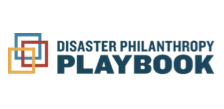
The Disaster Philanthropy Playbook is the comprehensive resource of best practices and innovative approaches to guide the philanthropic community in responding to future disasters.
Designed as a multimedia, interactive online magazine, the Playbook compiles ideas and approaches from multiple organizations and is an “evergreen” resource designed for continued updates and knowledge-building. Community planning, civic rebuilding, legal services, housing, addressing the needs of vulnerable populations, working with local, state and federal government, mitigation and preparedness are some of the common issues faced by communities post disaster that are covered in detail in the Playbook.
The Playbook also allows organizations to prepare for all phases of a disaster. What can we do to plan and prepare our community? What about mitigation? How do we help build a resilient community? What should we think about in the months and years after a disaster as we undertake the arduous path of recovery?
The Disaster Philanthropy Playbook is a joint project of the Center for Disaster Philanthropy and Council of New Jersey Grantmakers in association with the United Philanthropy Forum (formerly the Forum of Regional Associations of Grantmakers).
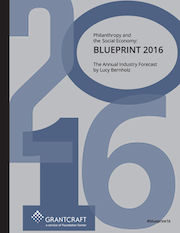
Philanthropy and the Social Economy: Blueprint 2016 is an annual industry forecast about the ways we use private resources for public benefit.
Foundation Center is pleased to again partner with Lucy Bernholz to offer the Blueprint as a GrantCraft guide. The Blueprint provides an overview of the current landscape, points to major trends, and directs your attention to horizons where you can expect some important breakthroughs in the coming year.
This weekly conference call series welcomed New Jersey-based grantmakers along with national funders and provided an opportunity for grantmakers to hear from a wide range of experts in the field of disaster philanthropy. This series started on November 5, 2012, one week after Sandy struck New Jersey, and continued through March 25, 2013. The written summaries of each recording are listed below.
This weekly conference call series welcomed New Jersey-based grantmakers along with national funders and provided an opportunity for grantmakers to hear from a wide range of experts in the field of disaster philanthropy. This series started on September 9, 2013 and concluded on November 4, 2013. The written summaries of each recording are listed below.
This weekly conference call series welcomed New Jersey-based grantmakers along with national funders and provided an opportunity for grantmakers to hear from a wide range of experts in the field of disaster philanthropy. Series 1 started on November 5, 2012, one week after Sandy struck New Jersey, and continued through March 25, 2013. Series 2 started on September 9, 2013 and concluded on November 4, 2013. The written compendium of the recordings is listed below.
Funding Indigenous Peoples: Strategies for Support, looks at how funders collaborate with and bring support to indigenous communities around the world. Through examples from a diverse range of foundations, this guide explores how grantmakers work with indigenous peoples, the approaches they take, and the practices they find effective.
This guide was developed in collaboration with International Funders for Indigenous Peoples (IFIP).
CSR executives have difficult jobs. They are expected to be strategic, aligned with business priorities, and focused on results. Yet success often requires navigating ever-changing expectations and a maze of competing priorities.
This strategy toolkit, developed in partnership with CECP, identifies three tools for clarifying your strategy and transforming your portfolio.
- Intent Matrix: Helps you to develop a customized map of your business motivations and engagement approaches.
- Issue Monitor: A dynamic and multi-dimensional process for prioritizing your issues.
- Impact Models: Four clear and distinct options for engaging your chosen issues.
The Silicon Valley Out-of-School-Time Collaborative invested in a cohort of regional nonprofit organizations to sustain and strengthen their ability to serve more students with stronger academic and social-emotional programming. Partners in the collaborative included three family foundations that together made an initial $1.6 million pooled investment over three years, and eight nonprofits that collectively served more than 7,000 low-income middle and high school students outside normal school hours. From the start of the partnership, funders and grantees held regular meetings focused on shared learning, trust building and dialogue. A midcourse evaluation of the collaborative showed that grantees were stronger, programs were better and are reaching more students, and funders had adopted new, collaborative grantmaking practices. The funders invested another $900,000 into a second phase of the work and committed to more flexibility –– letting grantees drive the group’s planning and learning efforts, and manage consultants, budgeting and group communications. Grantees also opted to redirect the focus of the collaborative from capacity building to program development and evaluation, with the added goal of sharing effective afterschool and summer program models with others, both inside and outside the region.

Building a Culture of Capitalization in Your Organization, is written for nonprofit arts organizations and shares findings from NFF's study of 36 capital grants made by the Kresge Foundation between 2010 and 2012. Arts organizations interested in building the strength of their balance sheets will find advice for making a capitalization plan, fundraising for different kinds of capital, and implementing new capitalization practices.

Recommendations for Capital Grantmakers, is written for arts funders who are looking to make smart and impactful investments. It includes tips for planning a grantmaking strategy, making the grant match the need, and ensuring that the grant is implemented successfully. This summary highlights findings from Nonprofit Finance Fund's study of 36 capital grants made by the Kresge Foundation to arts organizations between 2010 and 2012.
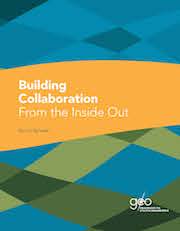
This publication is focused on building an organization’s collaboration muscles. It offers guidance on steps grantmakers and nonprofits can take to adopt a "collaborative mindset" and align values and practice so they can be better partners in collaboration. It is based on research and interviews with grantmakers, nonprofit leaders, technical assistance providers and thought leaders from 2013 through 2015.
On October 5, 2015, Building Public-Private Partnerships to Enhance Disaster Resilience: A Listening Session was convened by the Office of the Assistant Secretary for Preparedness and Response (ASPR) Division for At-Risk Individuals, Behavioral Health, and Community Resilience (ABC)and co-hosted with Grantmakers In Health (GIH). This is a summary of the final meeting report.
What comes after “strategic...?” If you said, “planning,” you’re not alone. And for many leaders of community foundations, especially small ones who don’t have the time or money for a big process, anxiety is the feeling that follows. If that’s the case, this guide is for you.
It invites you to test-drive some activities to bring your current program, operations and community leadership strategies into focus before you decide whether to create a plan or not. It helps you discover ongoing strategic practices and decide whether to keep them or not. If you already have done a strategic plan, and it is languishing on a shelf, this guide will help you refresh it.
PART A: Good Strategy Takes Practice (Not Just Planning)
PART B: Do Your Discovery
PART C: Jumpstart Your Strategy Narrative
PART D: Bring It Together
Looking To What’s Next
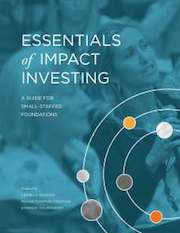
Seeking to increase their philanthropic impact, many engaged foundations are turning to impact investing. The reason is clear: The field and practice of impact investing have matured—structures are in place, best practices have emerged, and opportunities have multiplied—enabling more foundations to use this powerful tool. Yet entering unfamiliar terrain can be intimidating, and foundations with few or no staff face unique challenges even as they enjoy unique opportunities.
Essentials of Impact Investing: A Guide for Small-Staffed Foundations addresses those challenges and highlights those opportunities. The guide demystifies the process of designing and implementing an effective impact investing strategy, offering advice, tools, and real-world examples of impact investing by foundations with few or no staff.
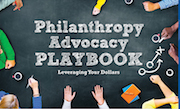
This publication provides information on 11 benefits and conversation-starters about philanthropic advocacy and lobbying. Specifically, it answers your questions about legal rules and provides concrete examples, templates, resources, and tips.
The goal is to help foundations and their grantee partners understand how advocacy and lobbying leverages their grant dollars, strengthens their missions, and helps them shape positive policy change to benefit communities.
There is widespread and growing recognition in the nonprofit sector about the importance of evaluation — not only for measuring impact, but also for improving programs and better serving communities. While grantmakers generally see evaluation as necessary, most are not yet investing enough resources in this area.
This guide discusses six principles for successful evaluation capacity building. By applying these principles, grantmakers can make the most of our evaluation investments and help our grantees become more effective and sustainable organizations.
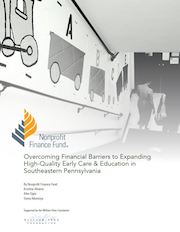
High-quality early care and education (ECE) programs have been proven to create positive outcomes for children—especially among those living in poverty. Yet many children from low-income families have a hard time accessing quality child care, and miss the critical developmental growth and foundation needed for academic and life success. Based on Nonprofit Finance Fund's research and analysis of 147 nonprofit child care centers in Southeastern Pennsylvania, the report demystifies the financial, business and systemic barriers to expanding high-quality care—and begins to identify how to increase access for more children.
Building Healthy Communities (BHC) is a 10 year, $1 billion comprehensive community initiative launched by The California Endowment in 2010 to advance statewide policy, change the narrative, and transform 14 of California’s communities most devastated by health inequities into places where all people have an opportunity to thrive.
Case study from Philanthropy New York documenting the formation, challenges and ultimate success of the Education Funders Research Initiative – an unusual funder collaborative that brought together funders for and against charter schools, funders with different views of testing and accountability, and funders with vastly different approaches to supporting education reform to identify and advance shared priorities.
This toolkit includes a number of tools for Steering Committee Working Groups as they form, determine strategic direction, develop implementation plans, and identify measurement indicators. This toolkit includes a description of working group member responsibilities, an action planning template, and sample instructions for the development of indicators. The tools have been generalized to be applicable across contexts; however, because no two collective impact efforts are the same, these resources should be considered a starting place to be tailored to the unique circumstances of each initiative.
